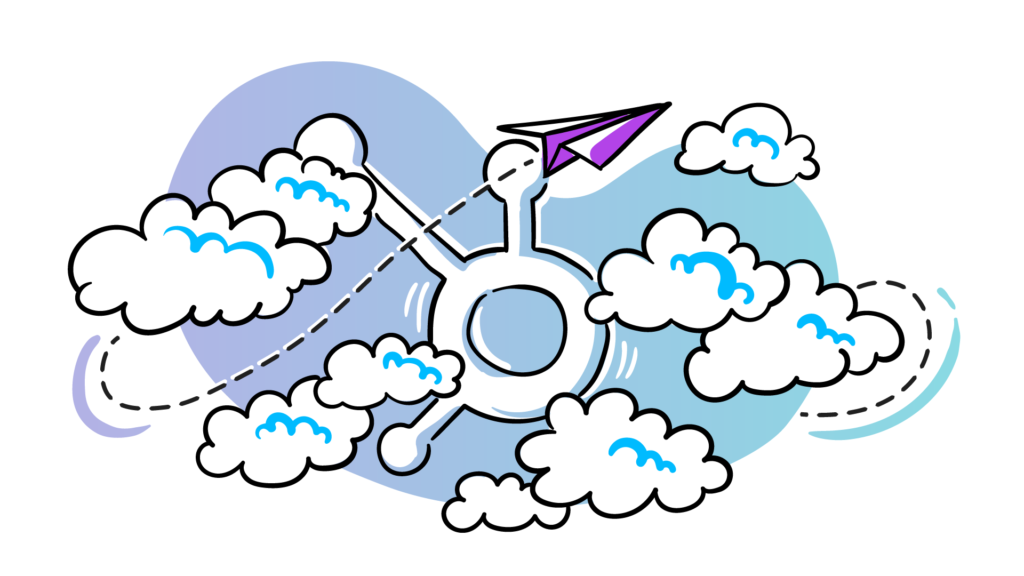Let’s be real: aligning marketing and sales should be a no-brainer. In theory, integrating Salesforce with your favorite email tool should bring it all together. But in practice, that integration can feel more like a headache than a solution—unless you pick the right tools.
I’ve seen firsthand how smart Salesforce email marketing integration can make sales and marketing teams more productive. If you run a small business or a growing team, you want to close more deals. You want to spend less time on manual data entry and “selling in the dark.”
In this article, I’ll dive into eight popular email marketing platforms you can integrate with Salesforce Sales Cloud. I’ll also touch on pricing and how to choose the right platform for your needs. And yes, Outfunnel will come up too. We help companies sync data and track engagement between Salesforce and email marketing tools. I’ll explain how.
Why Bother Integrating Email Marketing with Salesforce?
If you’ve been in marketing long enough, you know that email is a powerful way to reach and engage your audience. But, without connecting it to your CRM—especially Salesforce—you’re only seeing half the picture.

Here’s why integration matters:
- Automate Lead Management: You can automatically add new leads from email campaigns to Salesforce, or vice versa.
- Track Engagement: See who opened your emails and clicked links, all without leaving Salesforce.
- Personalized Outreach: You can use email engagement data to personalize interactions.
- Better Reporting: Track what’s working (and what’s not) when you combine your sales and marketing data.
- Overall, align sales and marketing teams: ensure both teams work with the same data, making your campaigns more effective.
8 Popular Email Marketing Platforms That Integrate with Salesforce
1. Mailchimp and Salesforce Integration

I don’t really need to introduce Mailchimp, it’s the OG of email marketing. Integrating it with Salesforce gives you a bit more muscle, allowing you to sync audiences and track campaign results directly in your CRM.
- Key Features:
- Sync Mailchimp audiences with Salesforce leads and contacts.
- View campaign performance metrics (opens, clicks) in Salesforce.
- Automate new lead creation from Mailchimp sign-up forms.
- Pricing:
- 1,000 emails/month: $13/month (Essentials plan)
- 10,000 emails/month: $34/month (Essentials plan)
2. Constant Contact and Salesforce Integration

Constant Contact is solid for businesses that want to keep things simple. It’s great for small businesses, and when you integrate it with Salesforce, you can sync contacts and automate some of those tedious tasks.
- Key Features:
- Sync contacts and leads between Salesforce and Constant Contact.
- Track campaign metrics (opens, clicks) directly in Salesforce.
- Pricing:
- 1,000 emails/month: $12/month
- 10,000 emails/month: $55/month
If your business relies on regular email newsletters or promotions, this is a solid, affordable option.
3. Pardot (aka Salesforce Marketing Cloud Account Engagement)
Pardot is Salesforce’s in-house marketing automation tool. If you’re already deep into the Salesforce ecosystem and running a B2B operation, this is likely the choice for you. Pardot integrates directly with Salesforce (obviously) and offers advanced tools for lead scoring, nurturing, and campaign ROI tracking.
- Key Features:
- Native integration with Salesforce Sales Cloud.
- Lead scoring and nurturing based on email engagement.
- Closed-loop reporting to track ROI from lead generation to deal closure.
- Pricing:
- Starts at $1,250/month, regardless of email volume (includes Salesforce license and advanced features).
Pardot is robust, but let’s be honest, it’s not for small teams budgets. It’s best suited for enterprises and fast-scaling B2B teams.
4. ActiveCampaign and Salesforce Integration

ActiveCampaign is one of those platforms that takes marketing automation seriously. While it has a built-in CRM as well, many ActiveCampaign’s B2B customers prefer Salesforce’s more advanced CRM functionality. If you want something that can keep up with your complex workflows but still integrates seamlessly with Salesforce, this is a solid choice.
- Key Features:
- Bi-directional sync between Salesforce and ActiveCampaign.
- Create automated workflows based on Salesforce data.
- Sync opportunity records to automate follow-ups in the sales pipeline.
- Pricing:
- 1,000 emails/month: $29/month (Lite plan)
- 10,000 emails/month: $125/month (Plus plan)
For businesses that need solid automation but aren’t ready to drop a grand a month on Pardot, ActiveCampaign is a great middle ground.
5. HubSpot and Salesforce Integration

HubSpot does a little bit of everything, from CRM to email marketing and beyond. The Salesforce integration ensures your leads, contacts, and deals are always in sync between platforms, helping you to build better workflows.
- Key Features:
- Sync Salesforce leads, contacts, and deals with HubSpot’s email marketing features.
- Trigger automated workflows based on Salesforce data.
- Track email engagement metrics right in Salesforce.
- Pricing:
- 1,000 emails/month: Free (Basic plan)
- 10,000 emails/month: $800/month (Marketing Starter plan)
HubSpot is a great marketing automation tool but if you grow out of the feature set of the Starter plan, it can be a bit pricey.
6. Campaign Monitor and Salesforce Integration
Campaign Monitor is another simple “just gets it done” platform. It’s not overloaded with unnecessary features—it just makes it easy to build beautiful emails and track results. With Salesforce integration, you can sync contacts and leads, and trigger campaigns based on real data.
- Key Features:
- Sync contacts and leads between Salesforce and Campaign Monitor.
- Trigger targeted email campaigns using Salesforce data.
- Track email engagement (opens, clicks) right in Salesforce.
- Pricing:
- 1,000 emails/month: $9/month (Basic plan)
- 10,000 emails/month: $59/month (Unlimited plan)
- Additionally, there’s a charge for syncing data between the apps, starting from $25/month
Campaign Monitor is a good option for teams that just want to keep email marketing simple and effective.
7. Brevo (formerly Sendinblue) and Salesforce Integration

Brevo is known for its flexibility and cost-effectiveness. It’s not just for email—it covers transactional emails, SMS, and even chat. Integrating it with Salesforce allows you to automate personalized email campaigns using your CRM data.
- Key Features:
- 2-way sync Salesforce contacts with Brevo email lists
- Pricing:
- 1,000 emails/month: Free (Starter plan)*
- 10,000 emails/month: $25/month (Business plan)*
Brevo offers great value for businesses that need more than just email marketing and are working with tight budgets.
* The Brevo-Salesforce integration is only available as part of Brevo Enterprise plan, however. You may want to check out our Salesforce-Brevo integration if you’d like to connect the tools on any other Brevo plan.
8. Klaviyo and Salesforce Integration

Klaviyo is particularly loved by eCommerce brands that want to leverage customer data for more personalized marketing. The Salesforce integration lets you sync customer and order data between platforms to fuel more targeted campaigns.
- Key Features:
- Currently, Klaviyo syncs one metric with Salesforce Sales Cloud: Became Lead.
- Pricing:
- 1,000 emails/month: Free
- 10,000 emails/month: $150/month
If you’re in the eCommerce world, Klaviyo is a powerhouse, helping you deliver personalized experiences at scale.
The limited native integration may put some customers off from using the Salesforce-Klaviyo combination, however.
(If you’re open to using 3rd party integration platforms, you may want to check out our Salesforce-Klaviyo integration.)
How Outfunnel Bridges Email Marketing Tools and Salesforce

Alright, now to the fun part—Outfunnel. We know that syncing Salesforce with email marketing tools can be a pain. Maybe you’re using multiple platforms, or perhaps your integration needs are too custom for native integrations to handle. Outfunnel solves that. It creates a seamless, automated sync between Salesforce and your favorite email tools, like Mailchimp and ActiveCampaign.
- Key Features:
- Automated contact syncing between Salesforce and email marketing tools. Just add leads to Salesforce and the right campaigns can start or stop automatically in your email marketing platform.
- Track email engagement (opens, clicks) in Salesforce. This gives your sales team the full picture.
No matter what email marketing tool you use, we’ve got your back when it comes to syncing it with Salesforce.
How to Choose the Right Platform for Your Salesforce Integration
There’s no one-size-fits-all when it comes to email marketing and Salesforce integration. It all depends on your business needs:
- B2B vs. B2C: If you’re B2B, consider Pardot or ActiveCampaign for lead scoring and nurturing. B2C and eCommerce brands might lean towards Klaviyo or Brevo.
- Budget: Brevo and Mailchimp are great starting points if you’re on a tight budget. If you need advanced features and don’t mind spending more, Pardot or HubSpot might be for you.
- Complexity: The more advanced your email workflows and marketing automation, the more you’ll want tools like ActiveCampaign or HubSpot.
All in all, Salesforce email marketing tool integration is about more than just syncing contacts—it’s about improving efficiency and driving smarter campaigns. Whether you’re a small business looking for something simple (like Mailchimp or Brevo) or an enterprise with advanced needs (hello Pardot!), this list has something for everyone.
Still not sure? You may want to talk to a Salesforce marketing automation consultant instead.
And if you ever feel stuck trying to connect the dots between Salesforce and your email tool, Outfunnel is always here to make that process smoother.



